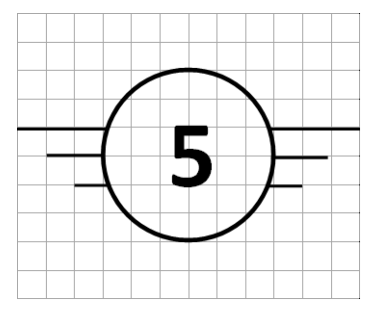PART 16 - Requirements for a class C5 unmanned aircraft system and C5 accessories
A class C5 UAS bears the following class identification label on the UA:

A class C5 UAS shall comply with the requirements defined in Part 4, except those defined in paragraphs (2) and (10) of Part 4.
In addition, it shall comply with the following requirements:
(1) be an aircraft other than a fixed-wing aircraft unless tethered;
(2) if it is equipped with a geo-awareness function, comply with paragraph (10) of Part 4;
(3) during flight, provide the remote pilot with clear and concise information on the height of the UA above the surface or take-off point;
(4) unless tethered, be equipped with a low-speed mode selectable by the remote pilot and limiting the ground speed to not more than 5 m/s;
(5) unless tethered, provide means for the remote pilot to terminate the flight of the UA, which shall:
(a) be reliable, predictable and independent from the automatic flight control and guidance system; this applies also to the activation of this means;
(b) force the descent of the UA and prevent its powered horizontal displacement; and
(c) include means to reduce the effect of the UA impact dynamics;
(6) unless tethered, provide the remote pilot with means to continuously monitor the quality of the command and control link and receive an alert when it is likely that the link is going to be lost or degraded to the extent of compromising the safe conduct of the operation, and another alert when the link is lost; and
(7) in addition to the information indicated in point (15)(a) of Part 4, include in the manufacturer’s instructions a description of the means to terminate the flight required in point (5).
(8)A class C5 UAS may consist in a class C3 UAS fitted with an accessories kit that ensures the conversion of the UAS C3 into a class C5 UAS. In this case, the class C5 label shall be affixed on all the accessories.
An accessories kit may only ensure conversion of a class C3 UAS that complies with point (1) and provides the necessary interfaces to the accessories.
The accessories kit shall not include changes to the software of the class C3 UAS.
The accessories kit shall be designed, and each accessory shall be identified, to ensure a complete and correct installation by a UAS operator on a class C3 UAS following the instructions provided by the manufacturer of the accessories kit.
The accessories kit may be placed on the market independently from the class C3 UAS for which they ensure the conversion. In this case, the manufacturer of the accessories kit shall place on the market a single conversion kit that shall:
(1) not alter the compliance of the class C3 UAS with the requirements of Part 4;
(2) ensure compliance of the UAS fitted with the accessories kit with all additional requirements defined in this Part with the exception of point (3) above; and
(3) be accompanied by manufacturer’s instructions providing:
(i) the list of all class C3 UAS to which the kit can be applied; and
(ii) instructions on how to install and operate the accessories kit.